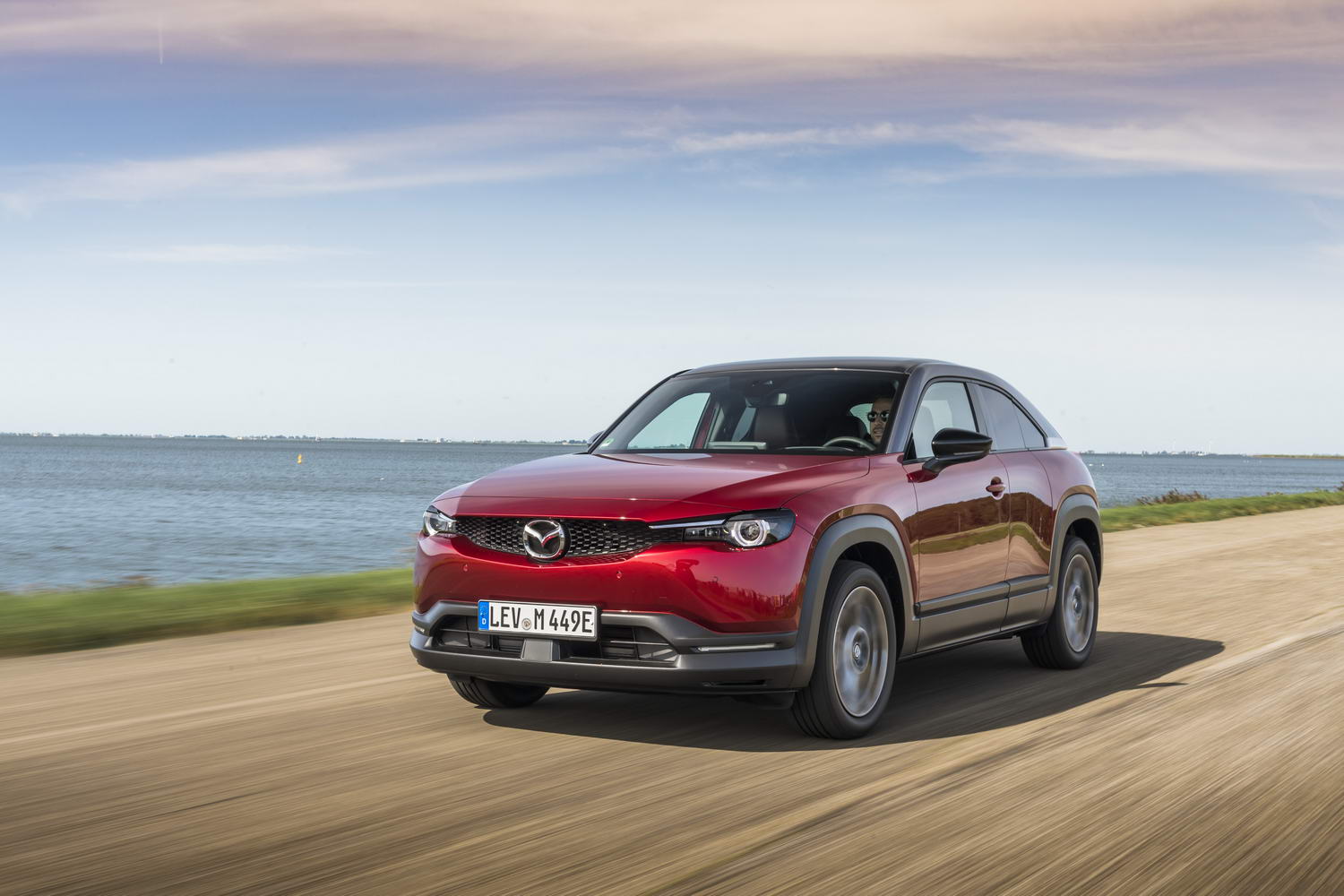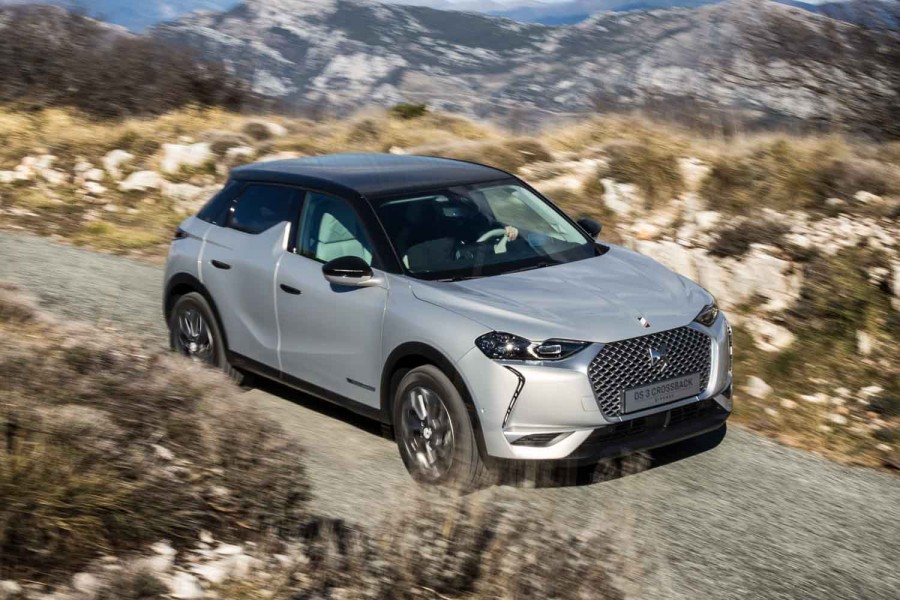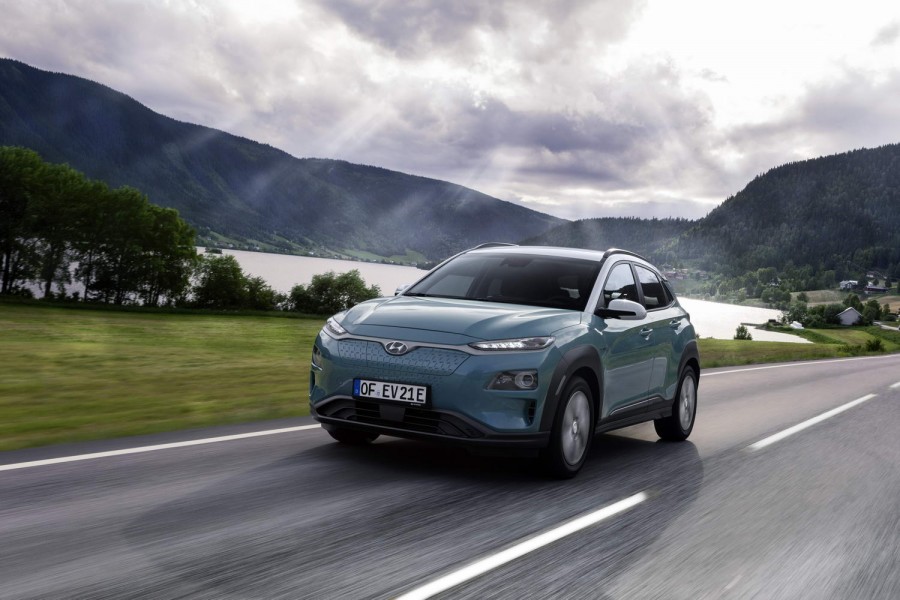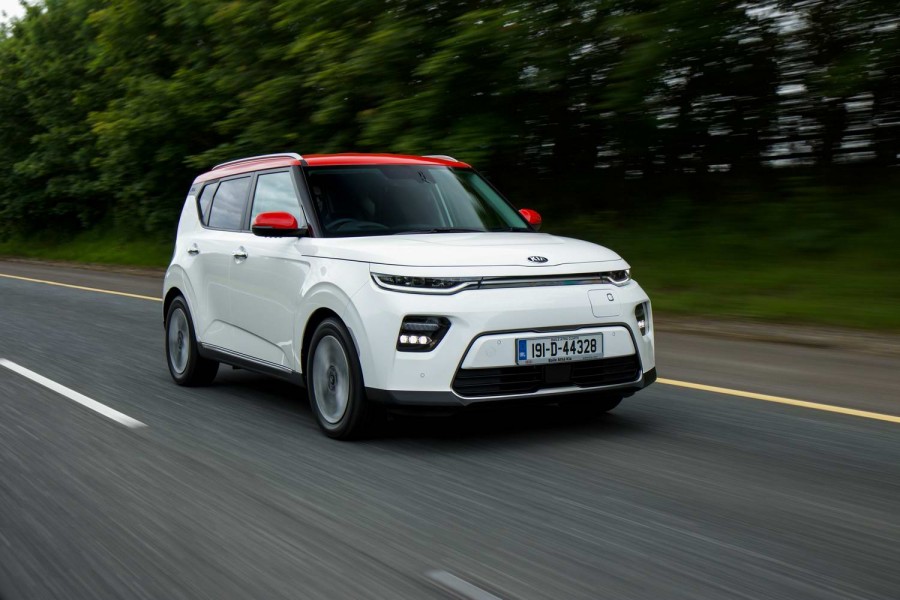Celebrating its 100th birthday in 2020, Mazda enters the electric age for its second century with this MX-30 crossover. Can it convince in an increasingly congested compact electric vehicle (EV) segment, especially as Mazda appears to have taken a risk when it comes to the MX-30's single-charge range?
In the metal
Mazda decided not to simply electrify one of its existing crossovers or SUVs, such as the relatively new CX-30, and instead gives its potential new EV customers a bespoke design for the MX-30. It's pretty tidy too, coming with the option of a three-colour paint scheme that paints the roof, the main bodywork and then those metallic side panels in different shades. It's a clever piece of design that differentiates the MX-30 from the rest of Mazda's CX range of vehicles, yet it isn't overtly 'electric' in appearance as some EVs tend to be. Some will think the Mazda slightly underplayed and safe; others will like the fact that it's not trying to look like an extra from a science fiction movie. Us? We like it, and we'd rather point out the fact that it has natty rear-hinged doors at the back like an RX-8 or BMW i3.
These allow access to a second row of seats that's fairly bijou in size, but we do think a quartet of six-foot tall people should be able to get comfortable on board the MX-30. The bigger problem in the back is that it is quite dark in there, despite the fitment of a sunroof on plusher models, because there's not much of a glasshouse behind where the B-pillar should be. Having said that, rear headroom is impressive, and the boot is a decent enough size, even though the hatch at the back has a steep rake to the screen. Up front, it will be familiar but slightly unusual if you're an owner of a 'regular' Mazda already, because much of the switchgear and displays from the company's conventional range is retained. There's a large digital screen in the instrument cluster, however, and a new touch for the MX-30 is a seven-inch touchscreen for the climate controls. Intriguingly, although this works well in operation, Mazda still puts buttons down the side of the screen for key functions like temperature adjustment, fan speed, auto control, demisting of the two windscreens in the car and also an on/off switch. The more ecological touches in the cabin amount to the use of 100 per cent recycled PET polyester material on the door cards, the adoption of vegan-friendly leatherette for the seats and then a nod back to Mazda's past - cork lines the door grab handles, the centre console and that cubby area created by the MX-30's rather attractive floating console. The reason for the use of this material, beyond its renewable nature? It's because, 100 years ago, Mazda began life as a company manufacturing corks. Good homage, there, Mazda.
Driving it
Mazda's big gamble here is the range. It has elected to fit the MX-30 with what it calls a 'right-sized battery pack', rather than chasing ultimate kilometres for use in the sales bumf. It has sound reasoning for this: the production of large lithium-ion batteries increase the CO2 footprint of a vehicle over its entire life-cycle, including charging phases, and so pushes the 'break-even' switch with a comparable internal combustion engined (ICE) car for carbon output to a later, higher-mileage point in the EV's life. A bigger battery pack also makes an EV heavier and not as much fun in the corners, while there are also packaging and cost constraints to think of. Further to this, Mazda has assessed that most European customers only tend to do 50km a day on average and therefore they do not need 300, 400 or 500km of capability in their mainly urban EVs.
All very noble. But still risky, because customers considering switching from ICE to EV tend to look at the range first and foremost. Mazda has fitted the MX-30 with a 35.5kWh lithium-ion battery pack, allowing a city driving maximum of 265km and a realistic combined figure of just 200km on a single charge. This is a very similar tactic employed by Honda with its e city car and it has caused a few raised eyebrows.
Of course, Mazda is renowned for its engineering prowess and it has done a smashing job with the e-SkyActiv powertrain of the MX-30. It's a fairly modest 107kW electric motor doing the donkey work, which means 145hp and a 0-100km/h time that only just dips beneath the ten-second barrier. However, it has been very smoothly mapped and while the MX-30 never feels particularly quick, even by city-car EV standards (we're not expecting the sort of thump-in-the-lumbar acceleration of a Porsche Taycan, you understand), it is decently brisk and reasonably linear in its responses. Mazda also uses a sound augmentation process to give the motor a vaguely combustion-engine-like noise, but it's not overbearing and actually becomes quite pleasant to listen to.
The bonus of the smaller battery pack and limited range is that the MX-30 is relatively light, especially when you consider it is a crossover or small SUV. At 1,645kg excluding a driver, the result is that the Mazda is highly accomplished in the corners. It limits understeer and wheelspin to the barest minimum levels, the body leans a touch when you're powering through the bends but not so much that the MX-30 feels out of control and the calibration of the steering is excellent. It's maybe not thrilling to drive on a challenging road, then, but by the same token it sure isn't dull, either. There's also two-stage regenerative braking to play with, the most powerful setting of which allows for easy and fluid one-pedal driving.
Of course, urban EVs aren't bought for their chassis prowess and so while we admire the suitably talented handling of the MX-30, what buyers will love the most about it is the rolling refinement. The ride quality is fantastic and the suppression of both wind and tyre noise is first rate, so it's a supremely comfortable and dignified car when you're rolling along in it; this counts especially at motorway speeds, where the passenger compartment remains hushed even at 110km/h. Undoubtedly, this is the Mazda's strongest suit.
What you get for your money
Mazda Ireland has confirmed that the MX-30 will start at €30,495 including grants, for the GS-L version. It comes with adaptive cruise control, head-up-display, front and rear parking sensors, LED headlights and a rear camera as standard. Above that are the MX-30 GT at €31,595, and the MX-30 GT Sport, available in Bright (€34,795) and Dark (€35,095) guises. On top of that, Mazda will do two limited-time First Edition models (Bright and Dark again), which come with a more generous kit list than the base versions - including eight-way powered driver seat with memory setting, adaptive LED signature headlights and a choice of dark or light leatherette and cloth interior - and cost from €31,795. Order books are open now and first cars should be delivered to customers in the first quarter of 2021, but that price is highly competitive against similar machines, although it should be borne in mind that almost all of the MX-30's rivals (whatever their shape) have more single-charge range than the Mazda.
Summary
As you would expect of Mazda, its first attempt at an EV is a very good one. The MX-30 maximises its lack of an internal combustion engine to great effect, providing the sort of serene refinement that only a well-engineered EV can these days. It also has a surprisingly spry chassis and a high-quality interior, and the pricing seems to be pitched just about spot on. It's not the most daring EV ever, nor is it particularly quick, and buyers will have to ask themselves whether a real-world range of 200km is truly going to be enough for them, but on the basis of this first showing it would appear the likeable MX-30 is going to win plenty of admirers in the coming years.






























